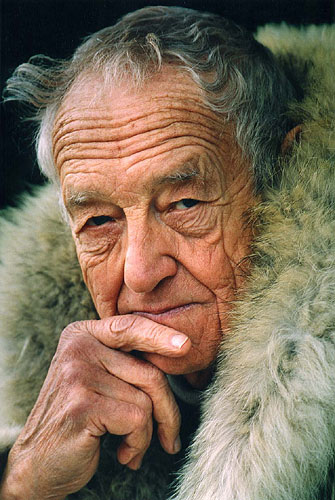Andrew Wyeth (1917-2009) was once considered such an important American painter that his work was featured on the cover of Time (Wyeths Stunning Secret). But today, who reads Time magazine? And who cares for traditional figurative art? Back in 1986, Wyeth was already old and out of favor with the postwar, post-Pollock, post-Warhol critical establishment. But it was the scandal of sex, private nude modeling sessions with Helga Testorf (the German-born nurse of an ailing Pennsylvania neighbor) that brought Wyeth into the modern era. Not modern technique or conceptual art: In five selected Helga paintings (on view through with two prior works), Wyeth is an organic literalist. Braided hair, yellowed grass, frosted tree branches, flesh no longer firmhe renders these details in a continuum of nature. Even when laid out half-nude, as in Overflow, Helga is less a personality than a fact, a part, a specimen of the same interconnected earthly organism that produced Christinas World (Wyeths iconic 1948 image). Instead, Wyeth became modern by concealing the secret Helga trove for 15 years (beginning in 1970), then revealing them like a showmanhence the Time coup. (Take that, Andy Warhol!) It didnt matter if he and Helga were lovers or not. Just the suggestion, the penetrating and throbbing sexual feeling in all the Helga pictures (as he told curator/author Thomas Hoving), made Wyeth less square, more worthy of reappraisal. It separated him from mere illustrators like Norman Rockwell and moved him closer to Edward Hopper. (Closed Mon.) BRIAN MILLER
Thursdays, Fridays, 10 a.m.-5 p.m.; Fridays, 10 a.m.-9 p.m. Starts: June 25. Continues through Oct. 18, 2009




